Time is life: Key learnings from AI & Digital Health Summit
AI generated clinical reports pass FDA inspection better than human written versions, yet the industry's biggest bottleneck is no longer algorithms, but change management.
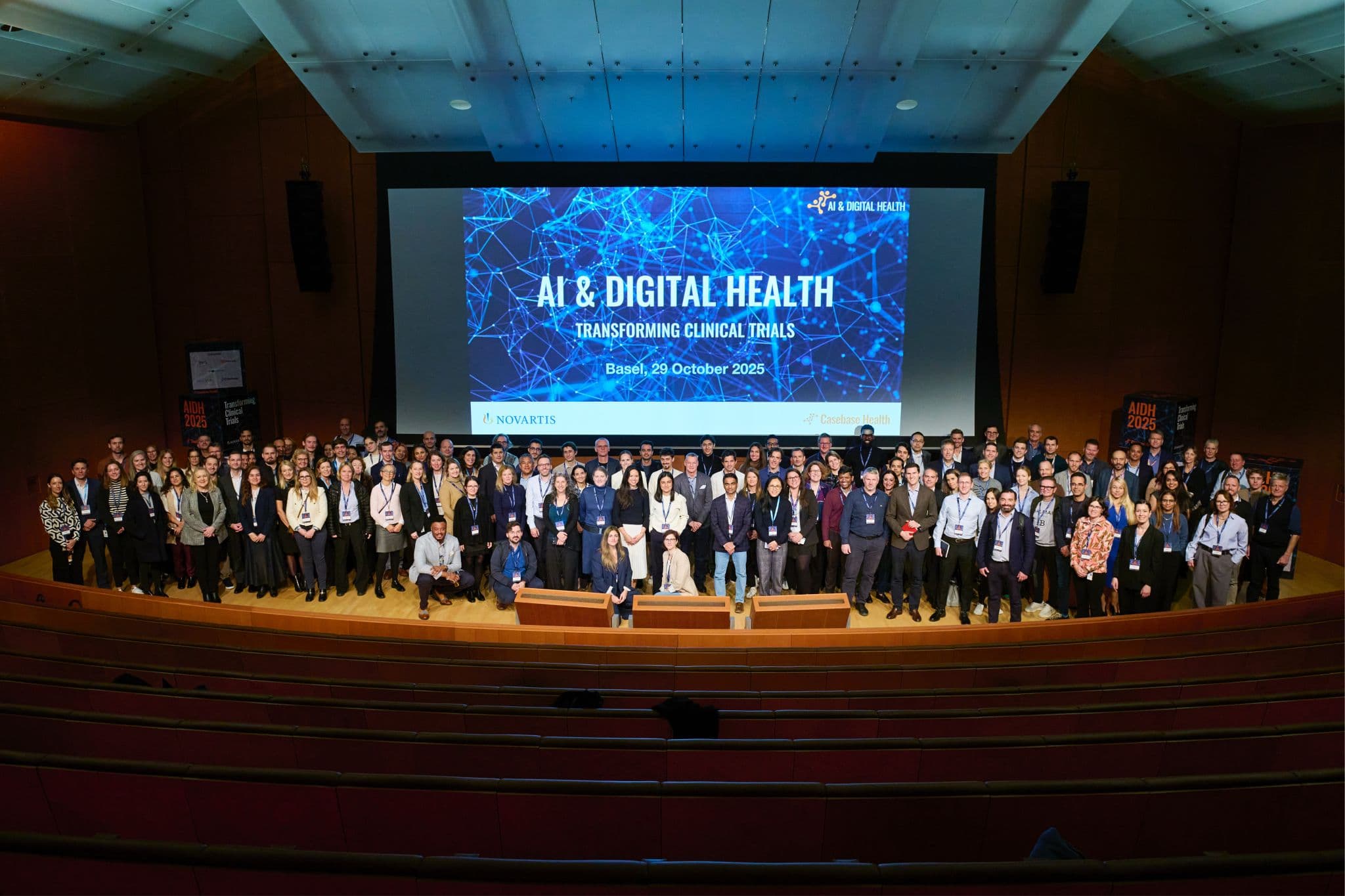
This week I flew to Basel with my colleague Lukas Mertensmeyer for the Health Summit where pharmaceutical leaders gathered to discuss AI implementation across clinical development. After a day of presentations and meetings with those in attendance like Novo Nordisk, Roche, and Sanofi, some clear themes emerged about where the pharma AI industry stands. In this blog post we wanted to take a moment to share our notes from the conference. P.S we also have extensive notes of the sessions if there were any you missed, just get in touch!
In summary:
- Novo Nordisk reduced Clinical Study Report generation from 6-15 weeks to same-day delivery where even regulators prefer the AI versions
- Documentation automation has emerged as a standout use case with FDA/EMA validation across multiple companies
- Agentic AI automating clinical operations for use cases such as CRA agents and trial monitoring is a trend that will continue to grow for 2026
- Change management consumes implementation budgets and emerges as one of the biggest barriers is now convincing employee's to work differently
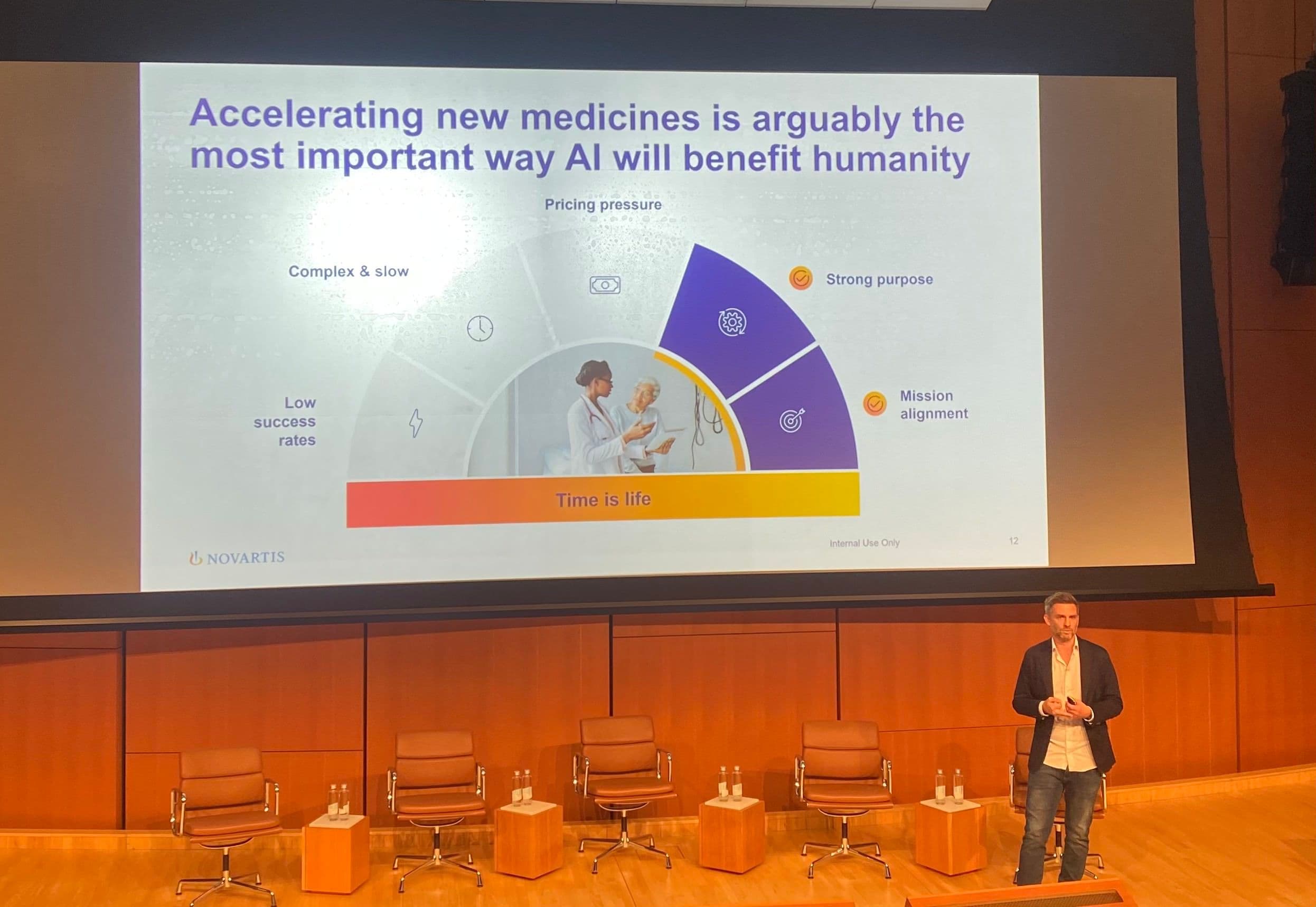
Before diving in, it's worth reminding why drug development presents both unique challenges and extraordinary opportunities for AI adoption. Maxwell Lawson from Novartis opened the summit in his keynote that framed the stakes: "Time is life." In drug development, cycle time reduction is a moral imperative. Drug development operates on 10-15 year timelines and reducing these timelines has huge human and cost implications. Every week saved in bringing a medicine to patients represents lives extended or saved. All while grappling with a high regulatory burden and staggering data complexity.
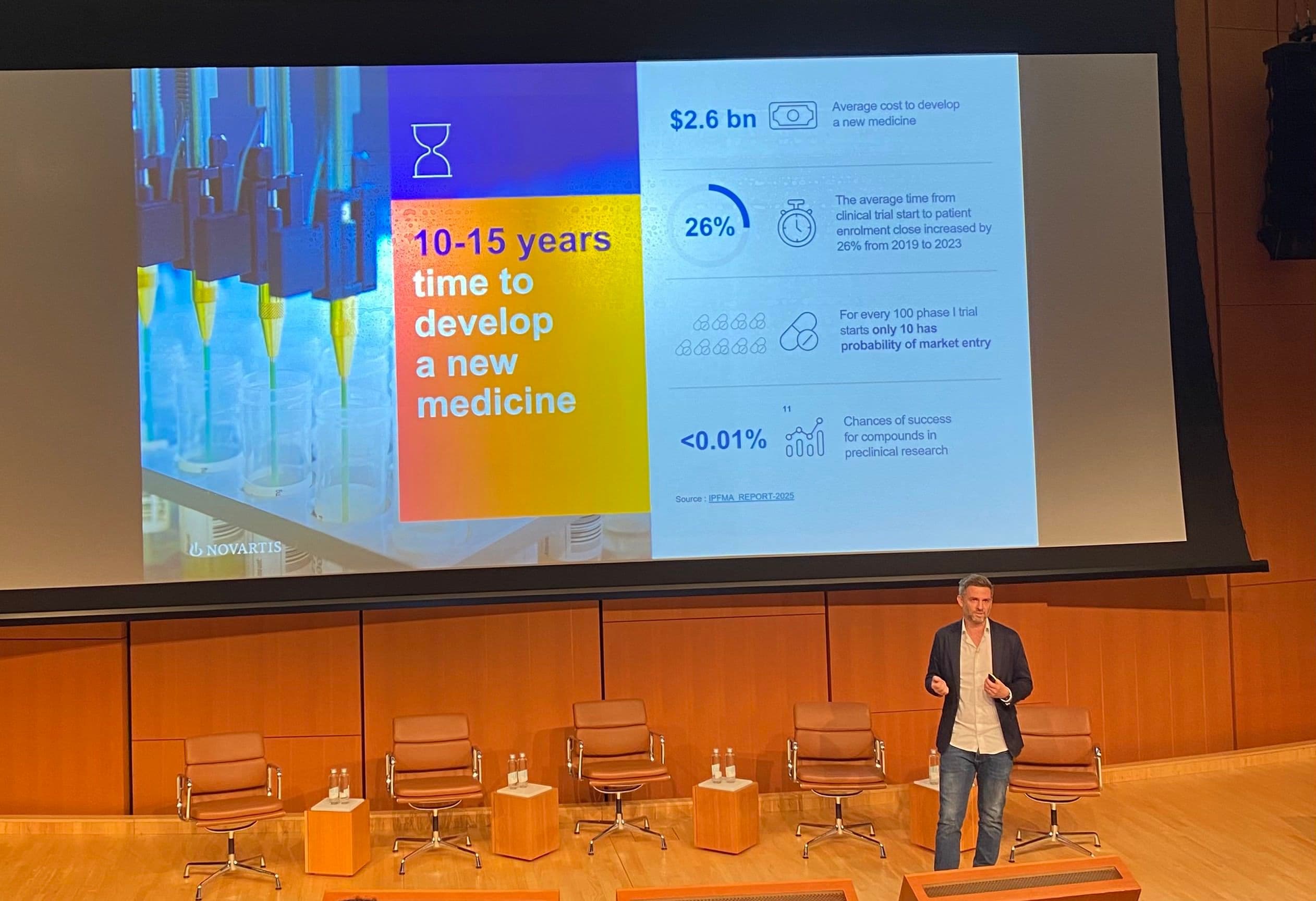
Documentation is a stand out use-case
One standout success story came from Waheed Jowiya and his colleague Louise Lind Skov who lead Novo Nordisk's AI transformation. They presented their transformation of Clinical Study Report (CSR) generation, dense technical documents spanning 500-3,000 pages, required for regulatory submission, and historically consuming 6-15 weeks of time.
Novo's AI system now generates complete first drafts on the same day clinical data becomes available. Over two years, they've finalized 172 CSRs using this approach, reducing their medical writing team from 60 FTEs to minimal staffing—and they've sustained this efficiency despite an expanding portfolio. The system uses AI retrieval and generation with human review, maintaining auditability for regulatory inspections.
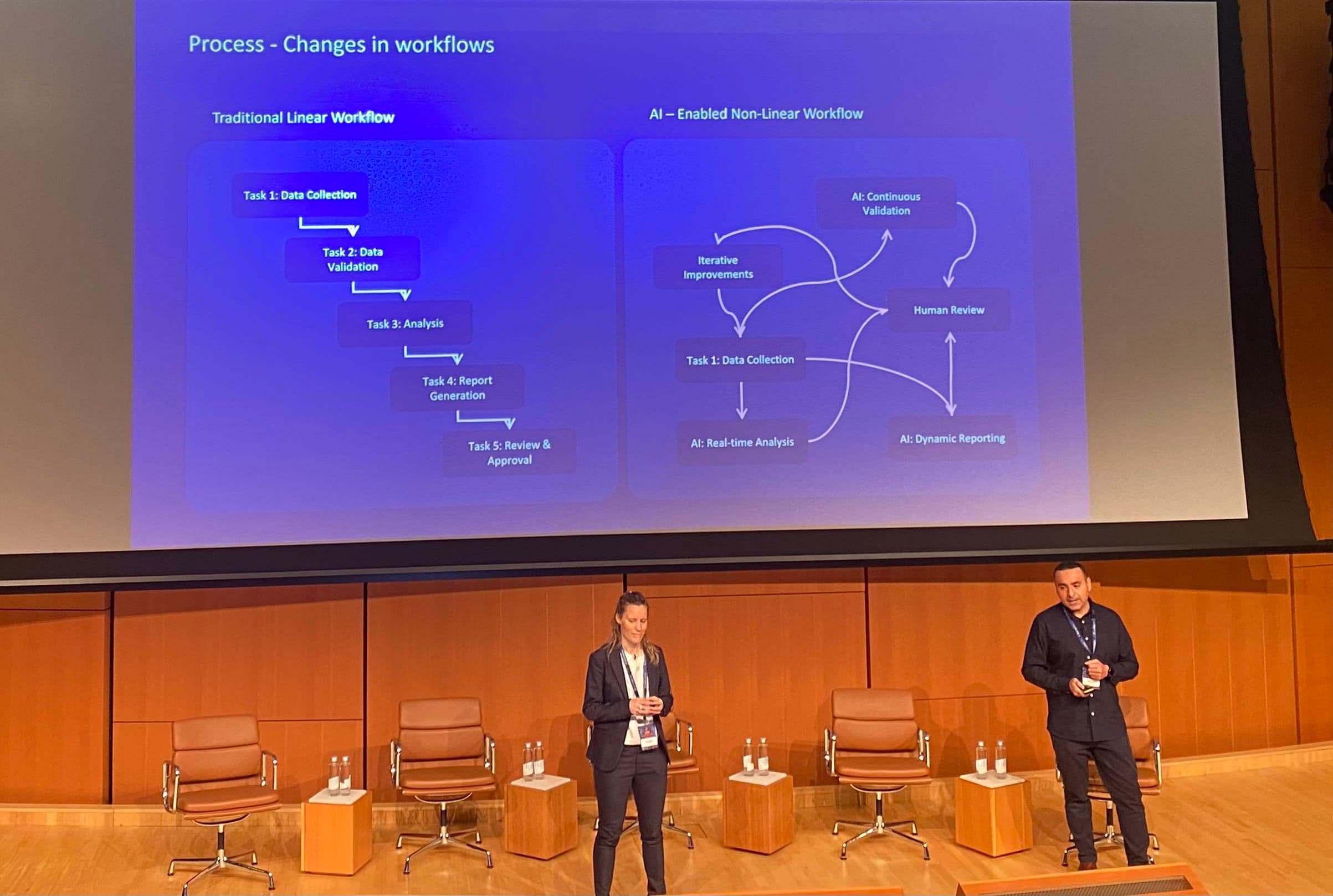
Remarkably, Novo's system has already passed inspections from the FDA, EMA, and Japanese health authorities across multiple product approvals. And even more remarkably, they mentioned how regulators even expressed preference for the AI-generated versions, noting they were more complete and less subjective than human-authored reports.
So why has documentation automation emerged as by far the most successful early use case for Pharma AI?
- Clear success criteria as documents either meet regulatory standards or not.
- Abundant training data as companies have decades of approved documents.
- Immediate ROI with weeks or months of time reclaimed.
Novo wasn't the only ones, as Sanofi and other companies also presented breakthroughs in areas like translations and regulatory documents, reinforcing how documentation automation has moved decisively from pilot to production in Pharma.
Agentic architectures are emerging
The next wave of AI in Pharma will be more ambitious: automating multi-step workflows that currently require humans to coordinate across multiple systems.
One vendor demonstrated a Clinical Research Associate (CRA) Agent working across VEDC, Oracle Clinical One, Microsoft 365, and Salesforce, autonomously completing tasks like summarizing study status and identifying compliance issues. Boris Bogdan from AWS also provided context on their service that can enable the build-out of these agent ecosystems, Amazon Bedrock AgentCore. Clearly the technical vendor landscape is continuing to mature to support varying use-cases and mature, production deployments of AI.
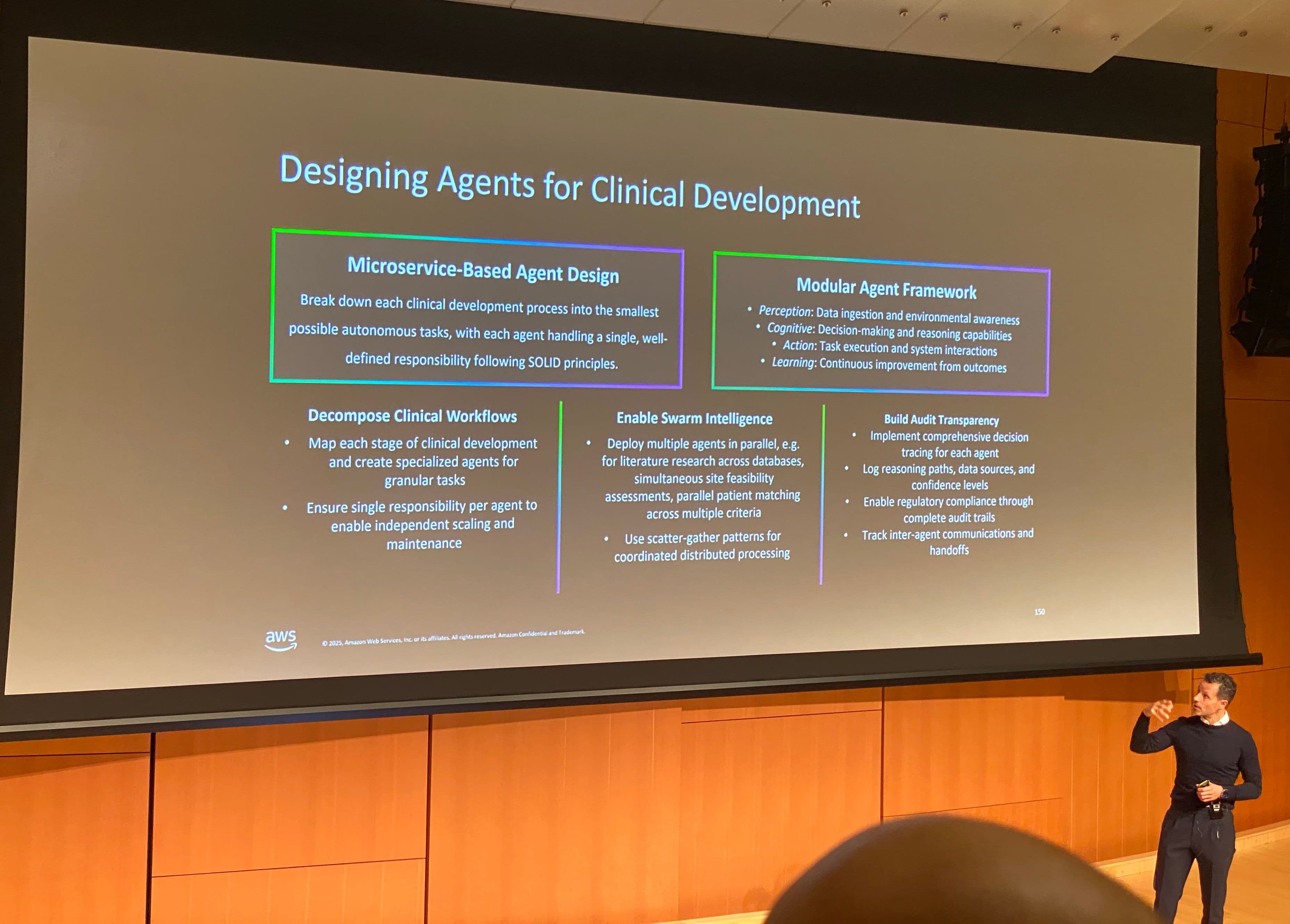
For agents, a critical principle emphasized across presentations was human-in-the-loop remains essential for high-stakes decisions. These aren't autonomous systems making final calls on patient safety or regulatory submissions but drafting with human approval.
Multimodal proves challenging
Some of the most intricate and impressive talks were about working with multimodal data—combining imaging, genomics, clinical records, and real-world evidence to enable better decision-making. Michael Moor from ETH Zurich presented reward models, a research concept where AI systems validate outputs step-by-step against clinical guidelines, with models that transfer across evolving AI foundations. Yet despite these technical capabilities, organizational barriers dominate the deployment challenges with these approaches, such as:
- Data standardization as even within single pharmaceutical companies, different projects structure identically-purposed data incompatibly.
- Legacy systems and decades-old technology stacks aren’t built for API integration, so getting AI systems to work with legacy platforms requires expensive custom engineering.
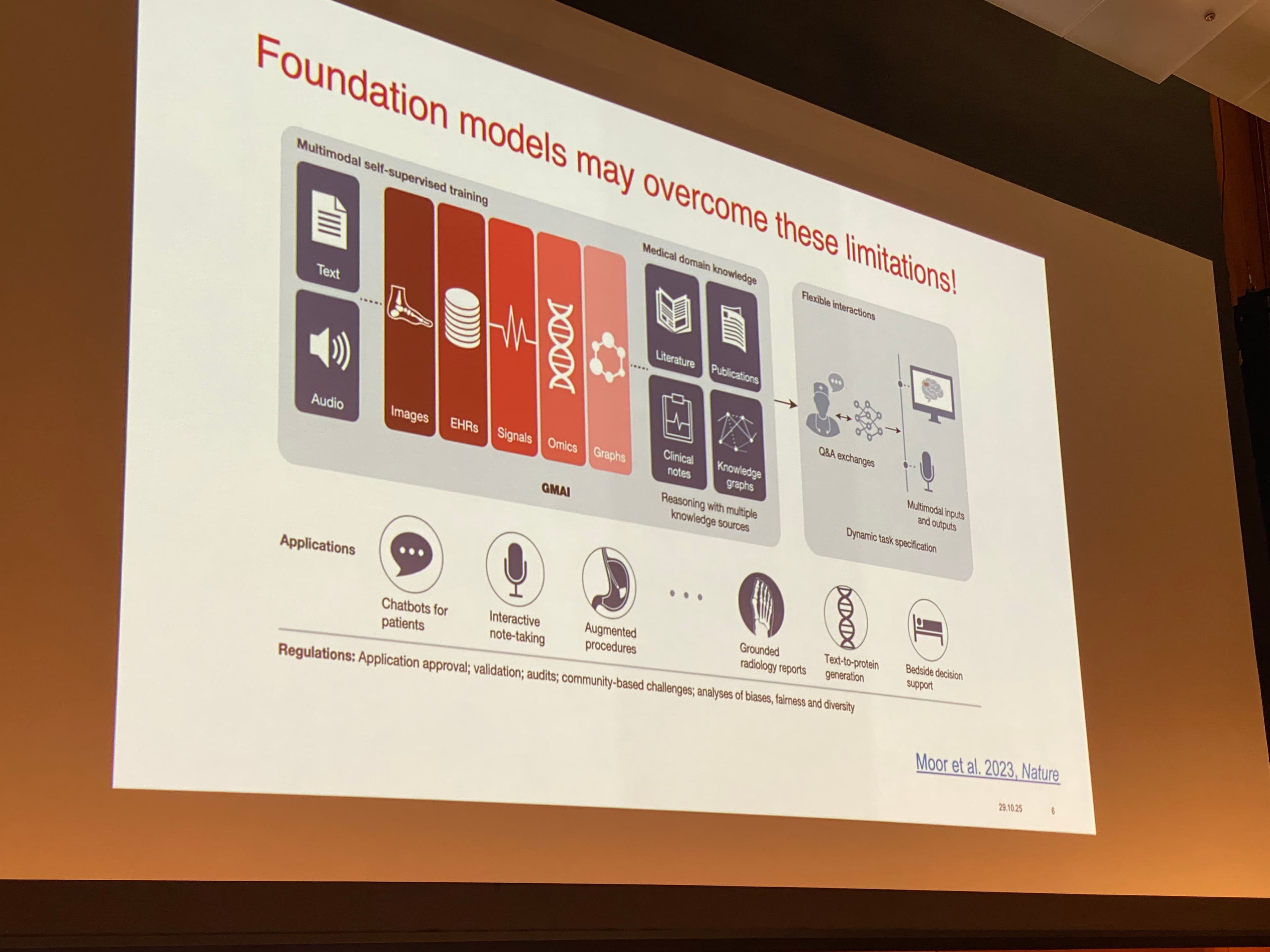
For this type of technology, widespread adoption will take significant time.
Organizational transformation is the bottleneck
The most consistent message across every presentation was that building the technology almost proves easier than changing how people work, a central challenge emphasized by Novo Nordisk, Bayer, Sanofi, and almost every speaker.
Success requires three parallel transformations happening simultaneously:
- technical such as agent orchestration, model integration
- process in designing new workflows than automating legacy
- organizational with new skills, behaviors, and governance structures
These must evolve together, and the organizational transformation is proving challenging.
Pharma employee’s have built 10-20 year careers developing expertise in medical writing, biomarker analysis, or regulatory document preparation. When AI systems fundamentally alter these roles, resistance comes from concerns about professional identity and career progression. Louise Lind Skov from Novo Nordisk explicitly called this "resistance management," treating it as a dedicated component of implementation rather than a communication problem to be solved with slide decks.
The warning was clear: organizations that treat AI as only a technology initiative will struggle with adoption regardless of how sophisticated their models and solutions are.
Navigating the regulatory reality
Thomas Brookland from Roche provided the most comprehensive overview of the regulatory landscape shaping AI deployment, highlighting the three European frameworks that are emerging: the EU AI Act, EMA Guidance, and the AI Competitiveness Plan.
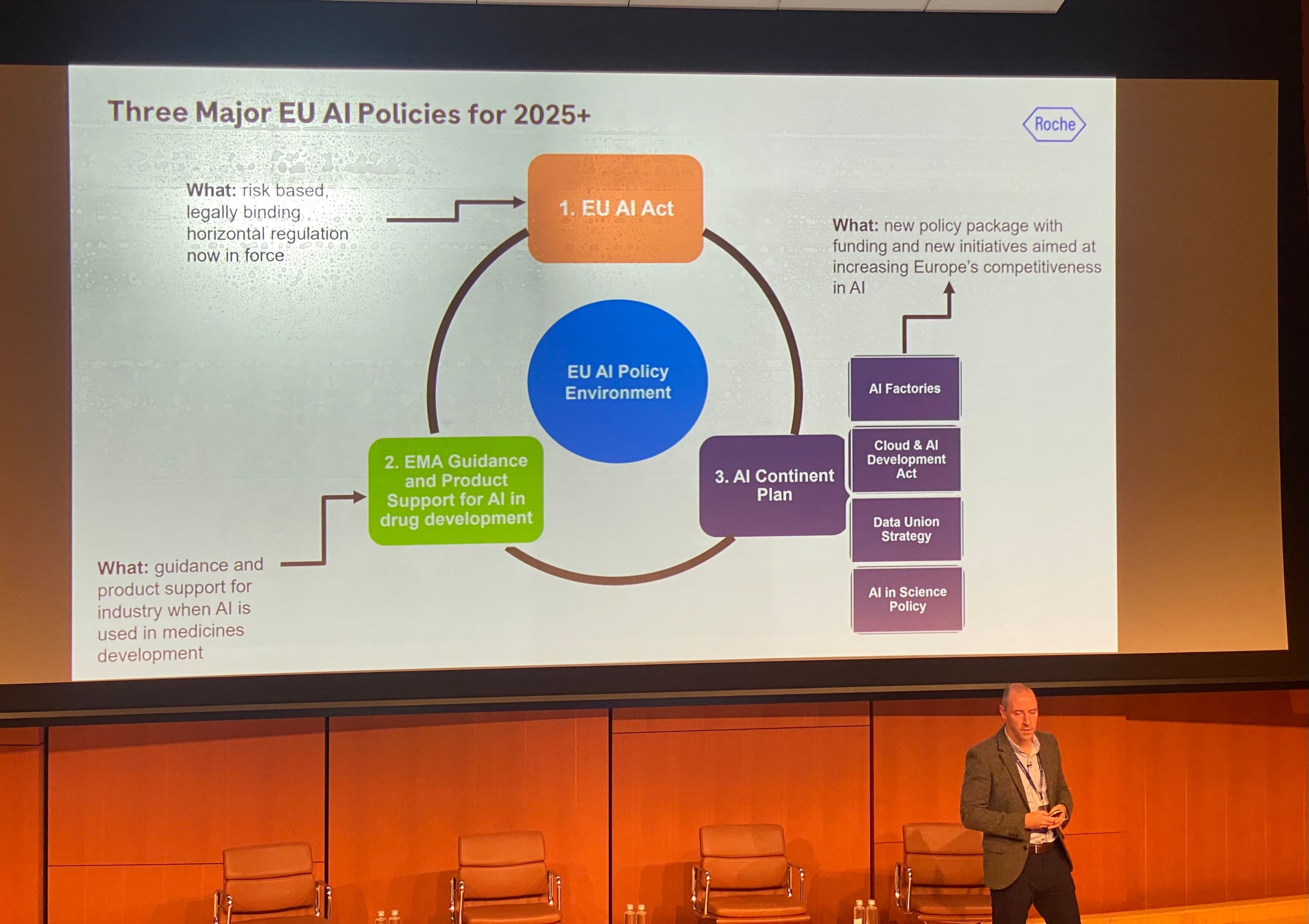
The most critical question for pharmaceutical companies is whether Article 2.6 of the EU AI Act—which exempts AI "specifically developed and put in service for the sole purpose of scientific R&D"—cover their use cases? The industry position holds that the vast majority of applications qualify for this R&D exemption, but this interpretation awaits confirmation.
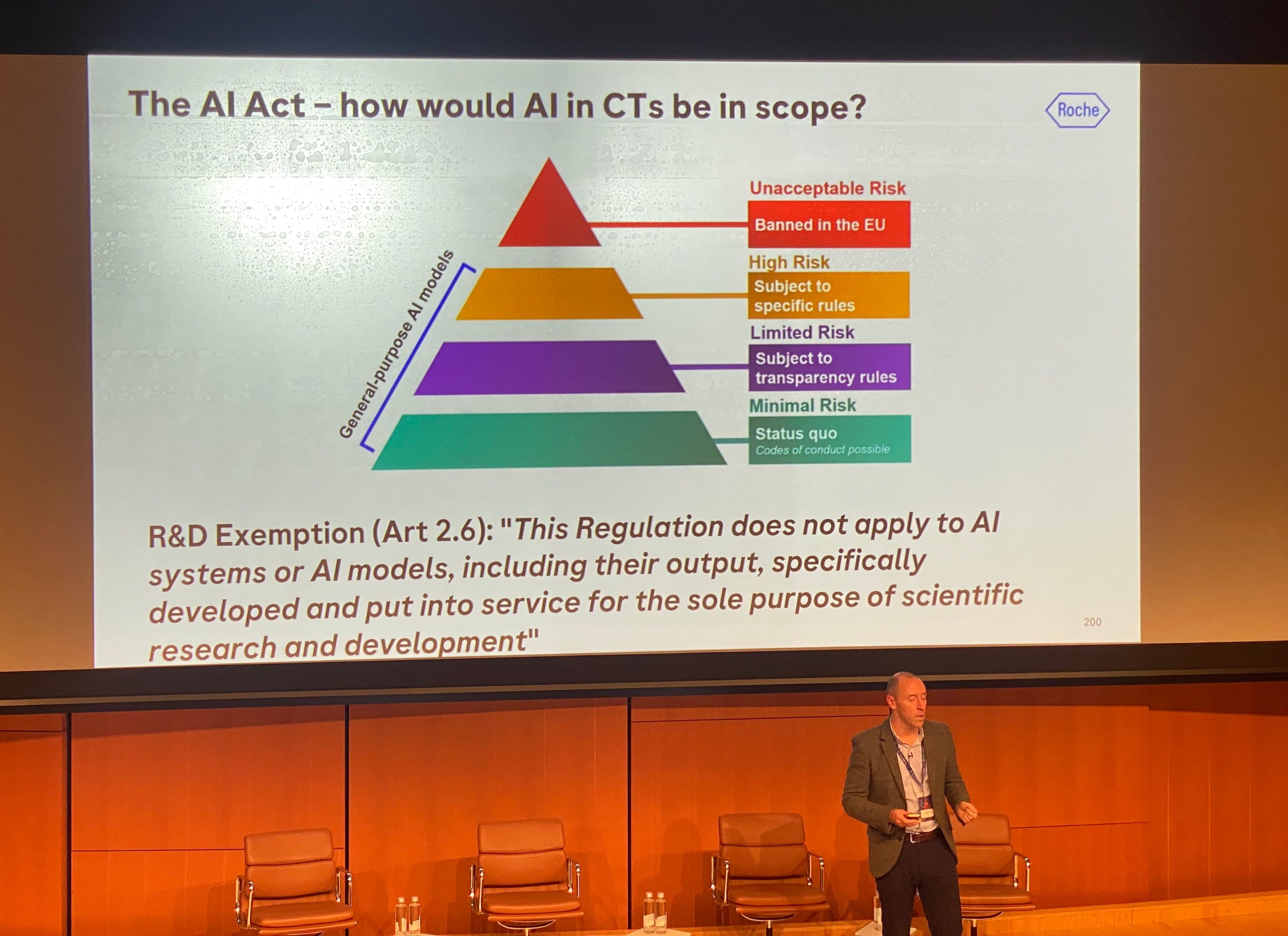
Brookland also emphasized the GxP scope debate as his key concern, arguing that drug discovery, first-draft authoring, and site selection are currently unregulated and should continue to be to avoid the slowing of innovation. As both regulators and industry lack experience a pragmatic co-learning approach has emerged where frameworks evolve based on real deployments rather than theoretical concerns.
Where the Pharma industry stands
Walking away from Basel, the message was clear to me that AI in Pharma is validated. Reflecting, one tension that surfaced repeatedly across every session was the continual tension of productivity and security. As this is a conversation we have with our customers every day at Ona, particularly those in highly regulated industries like pharmaceuticals.
At Ona, we've built our platform specifically to address this tension. We help pharmaceutical companies accelerate their technical transformation by enabling developers to deliver faster using AI agents, while solving for compliance through comprehensive audit trails, sandboxed environments, and deployment in customer-controlled infrastructure. Our platform combines agents, environments, and guardrails—where guardrails ensure agents comply with organizational rules and regulatory requirements that pharma companies must meet.
We're seeing success stories emerge across different pharmaceutical organizations navigating these exact challenges. If you're working through similar tensions between AI productivity and regulatory compliance, get in touch. We'd be happy to discuss the use cases we're seeing and how companies are solving them.
---
Thank you to Alette Hunt for the invitation, and to the Novartis team, Valeria De Luca, Maxwell Lawson, and Jelena Curcic. And also Casebase Health for organizing an excellent event, it was a pleasure to attend.